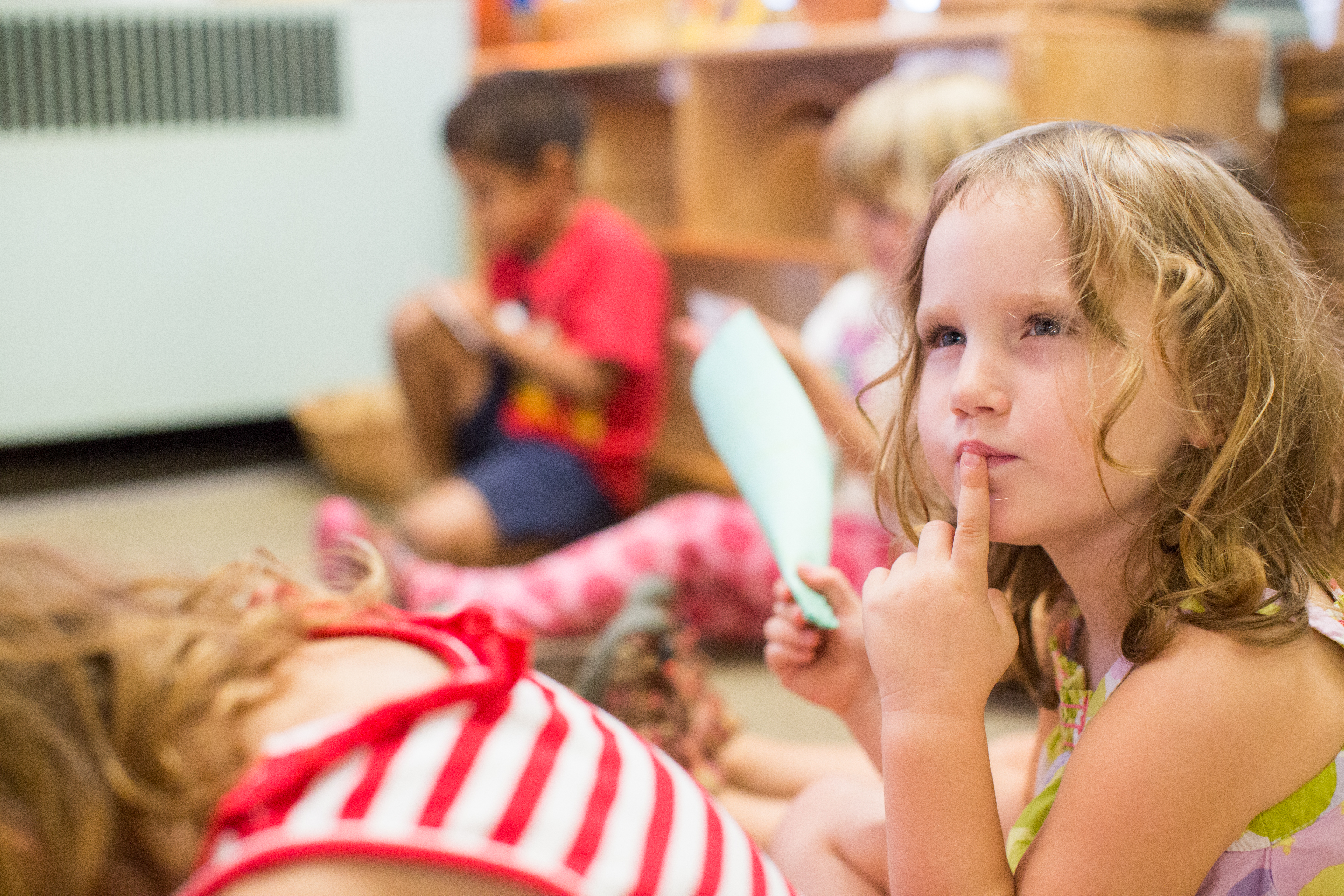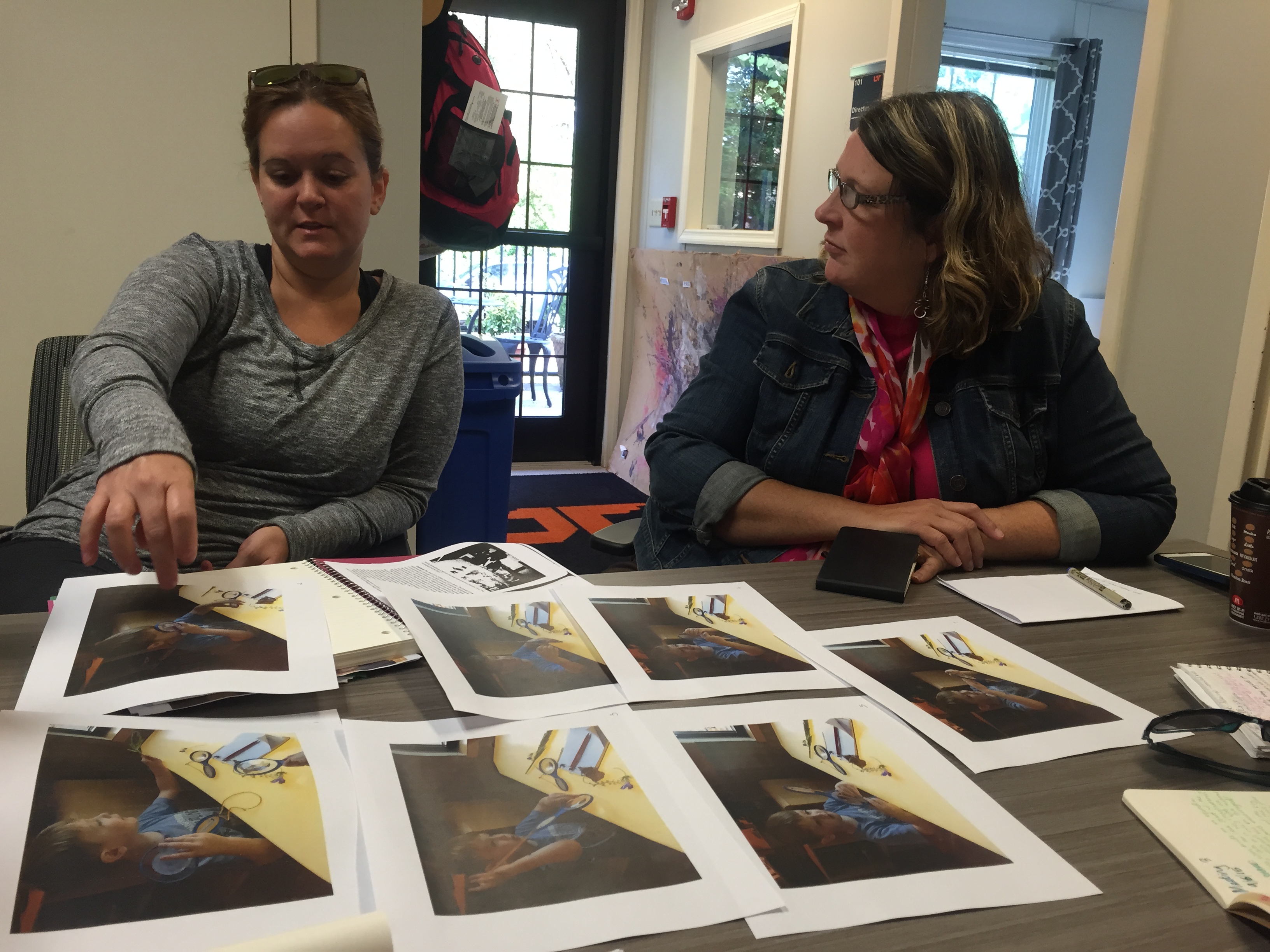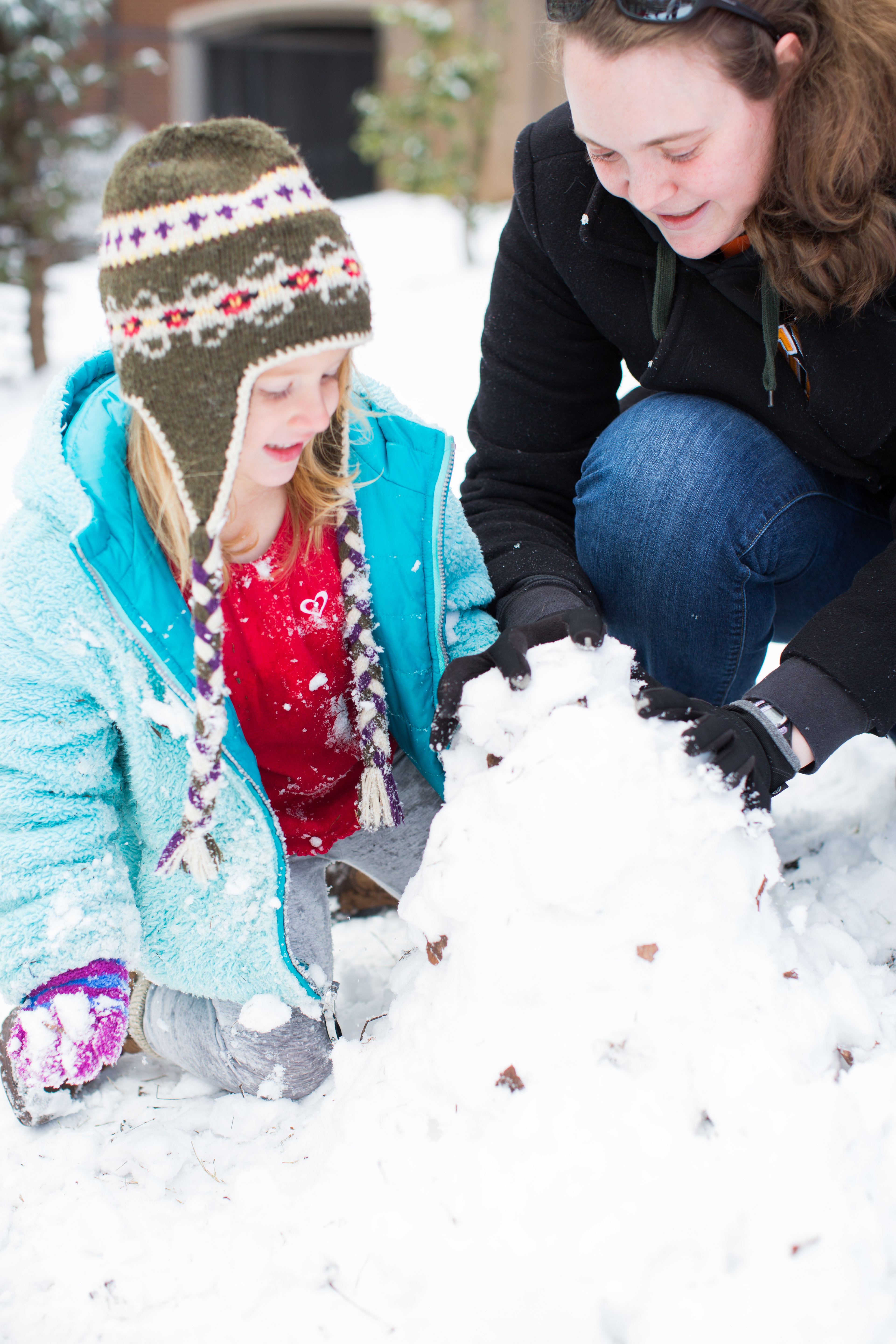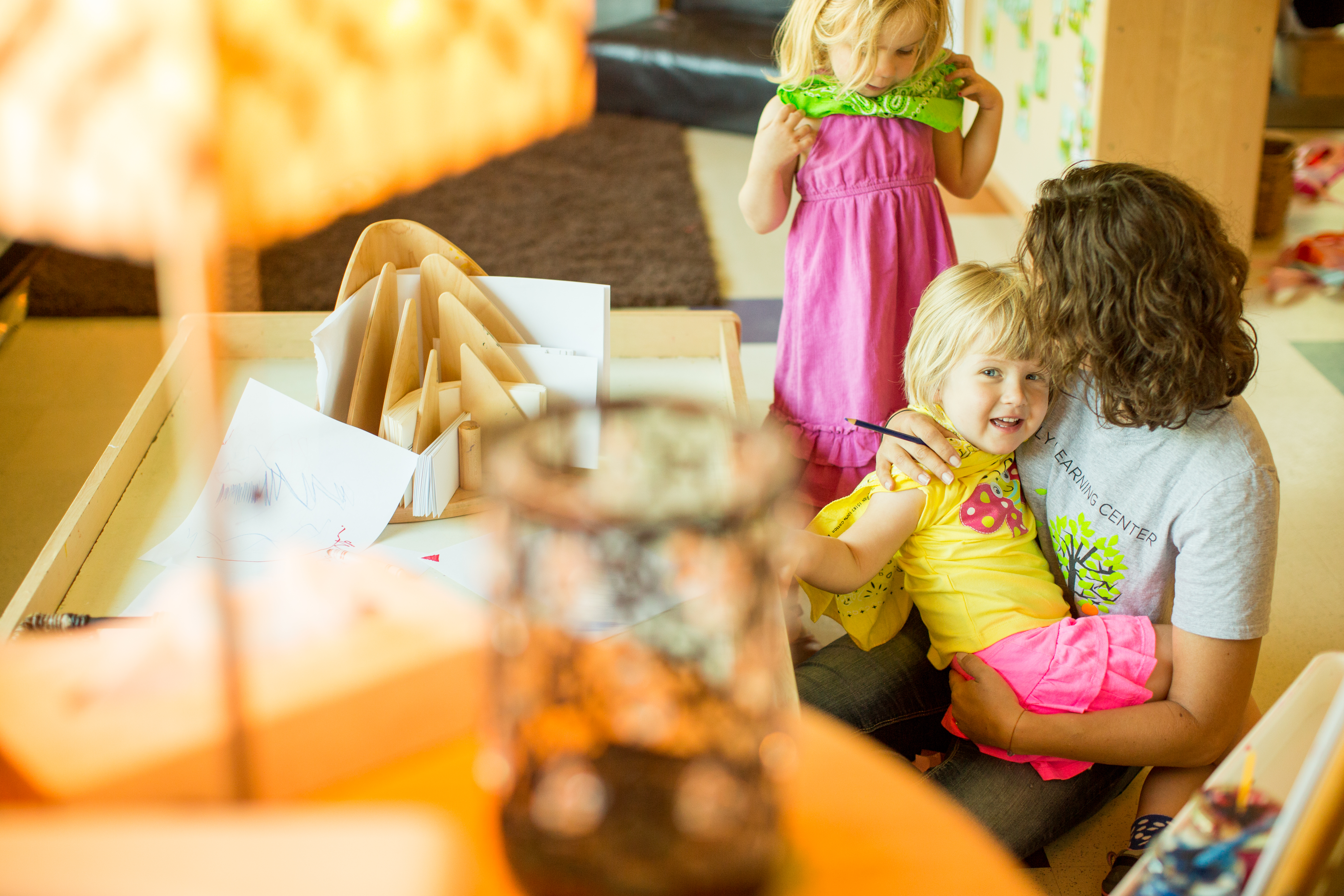Growth Mindset and Pedagogical Leadership
Robyn Brookshire, PhD
Director of the UT Early Learning Center for Research and Practice
Kathy Kidd, MS
Assistant Director of the UT Early Learning Center for Research and Practice
In the past several years, we have been on a journey to transform the pedagogical practices at the Early Learning Center. In order to concentrate our efforts program-wide, we chose two areas of intense focus: a nature-based initiative related to our spaces and curriculum and a renewed engagement with pedagogical documentation. The rich experiences we have witnessed from our teachers along this journey have been inspiring and gratifying. Recently, as directors of the program, we have been reflecting critically on the elements of change that have characterized our practices as leaders in the program in order to understand more fully what we believe our most effective work can be as we continue to support teachers with their work. We recognized that embracing change as a collective of diverse learners and thinkers required a shift in our perspectives. This post will describe some of the ways we have utilized Carol Dweck’s work on growth mindset to support change processes in our program. As leaders, we are aware of the importance of leadership to the quality of ECE programs (Muijs, Aubrey, Harris, & Briggs, 2004). In our program, we also see the potential that pedagogical leadership and pedagogical coaching hold in developing and maintaining innovative practices in early childhood education.

Our transformation work began in the program with guidance from Margie Carter and Deb Curtis (Carter & Curtis, 2010). We took the opportunity to spend multiple sessions as a community defining, revising, and sharing our image of children and what we think children deserve in our program. This work laid a foundation for our visions and provided some shared values, which in turn helped us develop a shared sense of purpose and direction as a community of practice. We also shifted our thinking about professional development activities, and, among several changes, we decided to take advantage of the opportunity to visit some aspirational programs. These study tours provided robust momentum for our staff to engage with making changes and to imagine further possibilities for their practices in our community.

We began to pay close attention to teachers’ reactions as they visited other programs and returned home imagining ways to recreate their practices. We also began to appreciate the critical role of curiosity and inquiry for teachers as they examined their practices. Although we were very clear that children’s learning needed to be built upon inquiry-based approaches, we acknowledged that supporting teachers’ inquiry would require new approaches from our leadership. We knew that inquiry was essential to both our nature-based pedagogy and documentation practices alike. Maintaining a focus on teacher inquiry, however, would require nurturing, provocation, and structure.
In setting about to foster teacher inquiry, we drew upon several sources. In 2015, we hosted our first Early Learning Institute to provide a professional learning conference for those interested in nature-based work in early childhood. The first year, we also co-hosted the traveling exhibit, Cultivate the Scientist in Every Child: The Philosophy of Frances and David Hawkins, which illustrates the importance and relevance of the work of David and Frances Hawkins. Their ideas about how children needed to have time “Messing About” with materials as part of inquiry-based learning informed some new practices for us to implement in support of teacher inquiry. We began to embrace, in theory and practice, the value of teachers having the chance to mess about with their own content in order to exercise inquiry-based learning in a hands-on way. We also desired to shift the culture of our community of practice so that inquiry and curiosity were welcome on many levels, amongst everyone in the community. We knew that this shift must also attend to teachers’ ability to be vulnerable with each other in trying out new practices, and we needed individuals to embrace the notion that new ideas sometimes don’t work, and that’s okay. We wanted to invite colleagues to support each other’s innovation. At the same time, we were aware that one common barrier to risk taking was the possibility that colleagues may criticize one’s successes or failures without empathizing through the messy process of making changes and disrupting systems of “the ways we’ve always done things.” The need for a climate in which it was okay to make errors and mistakes along the way to making changes led us to explore Carol Dweck’s work on growth mindset.
Growth Mindset
As pedagogical coaches, we asked: How could a growth-mindset approach help teachers revise, reimagine, and redefine their practices, leading to both teacher and program development? How could an understanding of mindset help us foster a climate of innovation and change?
For over 40 years the research work of Carol S. Dweck, Ph.D., Stanford University Professor of Psychology, has been focused on understanding why some people reach exceptional levels of achievement and what can be done to facilitate this success in others. What she discovered is that two distinct mindsets are at play when we are faced with challenges and obstacles, when we place value on the role of effort and critical feedback, and when we are faced with the success of those around us. These mindsets, labeled as Fixed and Growth, reflect the beliefs one holds about such defining traits as your intelligence, talents and personality.
A fixed-mindset sees these as fixed or set traits. You have the intelligence, talent and personality your DNA provided. You credit any success to the gift of these abilities, and routinely worry your abilities won’t be adequate for all challenges and obstacles you may face. In your early years, you likely were labeled as smart or a natural talent, and you developed the idea that effort was not necessary for success. Now you give up quickly or altogether avoid challenges and any risk of failure so you can continue to look smart. Negative feedback puts you on the defensive, and you are quick to blame other people and situations for your own missteps. You resent the success of others, and focus instead on proving your own superiority.
A growth-mindset utilizes a different outlook. You understand the brain is malleable, and new learning and skill come from effort and commitment. You believe anyone can learn and grow through hard work and dedication, at any point in life. You desire new challenges and show persistence when faced with obstacles in your path. You know effort is necessary for growth and mastery, and you are inspired by and able to learn from the accomplishments of others. You persist when faced with setbacks and failures, and often achieve high levels of success.

Moving from a belief that you have pre-existing fixed abilities to accepting the role of effort, trial and error, and reflection in your achievements puts your destination and outcomes back in your control. While most of us will never live fully within a growth-mindset, we can always choose to be on the journey. By listening to the voice of our fixed-mindset, we can reframe and open the door for creativity and innovation.
Our interest has been piqued by the notion that a shift in emphasis—a move away  from praising traits to instead observing for and identifying specific efforts and strategies that bolster critical thinking and creative problem-solving—can alter and enhance the course of learning and personal development for the children and for our early education team as well. Dweck warns us that this is not an easy task, that false growth mindsets exist and thrive as we try to rush too quickly to say, “We’ve got it!” or, “We’re doing it!” She cautions us to slow down, be mindful of our fixed-mindsets, and be intentional in noticing authentic efforts. She reminds us to create safe spaces for trial and error, and to provide guidance and advice to help everyone learn from their failures.
from praising traits to instead observing for and identifying specific efforts and strategies that bolster critical thinking and creative problem-solving—can alter and enhance the course of learning and personal development for the children and for our early education team as well. Dweck warns us that this is not an easy task, that false growth mindsets exist and thrive as we try to rush too quickly to say, “We’ve got it!” or, “We’re doing it!” She cautions us to slow down, be mindful of our fixed-mindsets, and be intentional in noticing authentic efforts. She reminds us to create safe spaces for trial and error, and to provide guidance and advice to help everyone learn from their failures.
Utilizing Growth Mindset in our Pedagogical Leadership
Given the power and potential of the mindset, how could we as school leaders and early childhood educators use this knowledge to study and transform teacher practices and professional growth? We began inserting this question into our planning and reflection discussions and began to implement a variety of approaches that we felt were relevant to our program and context. The following are some of the ways we have chosen to interpret Dweck’s work into our practices.
Content. We wanted to be transparent about bringing this approach to teachers, so we set about right away presenting Dweck’s work to them at teacher in-service so they would have a foundation of knowledge and an introduction to the language connected to the concepts.
 Individual coaching. We began using growth mindset as a framework to consider specific ways to individualize professional growth opportunities with teachers. Instead of assessing whether teachers held static strengths and areas for improvement, we instead tried to use an outlook that all teachers would embrace growth and learning, albeit in different styles and on unique timelines. We created time to dialogue as pedagogical coaches to plan and implement ways to implement this outlook in the context of on-on-one coaching sessions with teachers. We also began to embrace the variable paces of change that teachers need be on when asked to revise their practices or reconsider their approach.
Individual coaching. We began using growth mindset as a framework to consider specific ways to individualize professional growth opportunities with teachers. Instead of assessing whether teachers held static strengths and areas for improvement, we instead tried to use an outlook that all teachers would embrace growth and learning, albeit in different styles and on unique timelines. We created time to dialogue as pedagogical coaches to plan and implement ways to implement this outlook in the context of on-on-one coaching sessions with teachers. We also began to embrace the variable paces of change that teachers need be on when asked to revise their practices or reconsider their approach.

Action Research. Providing ongoing, routine professional learning occurs in our program within coaching, but also within weekly action research seminars, in which teachers have the chance to explore pedagogical questions with a small collaborative inquiry group. In seminar, we purposely structure ways for teachers to practice growth mindset skills, such as effective communication for collaboration. Practicing these skills in a structured group setting allows us to build a culture of deep collaboration; one that involves continuously revising one’s own perspectives by taking into account the ideas and theories from colleagues. Follow these links for more about how to support safe collaborative environments and how to create agreements for effective and respectful team processes.
Role modeling. In addition to direct coaching, we sought opportunities to role model the use of growth mindset approaches ourselves. We adopted language that helped us as leaders enter the dialogue about ways to be vulnerable about the risky parts of making changes to our program and practices. This also included practicing compassion with ourselves and others as we made inevitable bumbles and mistakes along the way. We began to share with teachers that we believe failure is a useful tool for innovation, as it gives us rich learning and information about how to alter our approaches toward new end goals.

Celebrating Innovation. We made intentional efforts to celebrate and make visible to the whole community when we noticed teachers trying new things and practicing innovation. We wanted to name and validate whenever we saw staff stepping out of their comfort zones to let them know we appreciated their risk taking. We also kept in mind that what looks like risk taking for one person (e.g., presenting their work at a conference) might not be the same level of risk taking for another. We sought to celebrate those differences amongst our staff as opposed to hoping everyone exhibited the same styles and growth trajectories. We have encouraged teachers to launch new ideas and to become “specialists” in specific areas of practice, to nurture their passions and support their leadership development. We have seen several teachers do so, allowing for a rich variety of expertise to arise and bring new energy across the program.
Early Learning Institute. In 2015, we took a big risk in asking teachers to present their work from across the program in a public venue when we began hosting our own pedagogical conference. We asked teachers to do so knowing it would push them outside their comfort zones. One of the ways we tried to make this a sustainable practice, though, was by asking teachers to share their authentic stories rather than the perfect, polished version; to illustrate the real processes of trial and error, reflection and revision, as they engaged in meaningful project work with children. Our conference attendees have given us feedback that they truly appreciate hearing the authenticity and honesty from our teachers, and that it deepens the insight they gain from our work because we are wiling to share ourselves and our stories in that way.
Reflections and Further Inquiry
Embracing a growth mindset has enhanced and supported our work to help teachers revise, reimagine, and redefine their practices. Furthermore, it has given a framework to our pedagogy as leaders as we have grappled with ways to acknowledge the diversity of learning styles and change processes that our teachers activate as we work toward collective goals. Nowadays, when we get stuck over ways to implement new changes or modifications to existing practices,
we are more confident that “everything is figureoutable.” We can work together in new ways that make it safer to launch new ideas, knowing our colleagues will be there to support our work, to help generate theories, to give us the essential feedback, and to celebrate our successes as well. We actively build a context in which teachers can pitch new ideas, and that everyone else’s job is to listen, understand, and consider them before rushing to judgment about whether it will fail or succeed. We look at dilemmas from many more angles before deciding how to proceed. This shift in our culture and our way of relating to each other has helped us appreciate how we can nurture teachers in some of the same ways we nurture children as learners: honoring their differences, passions, courage, curiosity, and joyfulness.

If we are truly steeped in inquiry, then our work leads us to more questions than answers; like the children, we can always pursue further questions and possible approaches. In our work, embracing growth mindset involves another stage of anticipating the appearance of new content and materials that will contribute to our thinking. Being open to new content allows us to stay fresh and renewed with our work, and inspiration abounds. At this time, we are looking forward to exploring Brene Brown’s work on vulnerability, as we continue to acknowledge the important role that vulnerability plays in teachers’ experiences of taking risks with each other in community. We want to explore ways that we can help teachers be able to optimize their learning through being vulnerable to share their practices openly with each other and a broader community. We also expect that working on mindfulness practices with teachers may be a means to balance risk-taking with self-awareness and self-care so that teachers can have a sustainable context for risk-taking and vulnerability. Recently, some of our staff attended training through Yale University’s Center for Emotional Intelligence, and they came back eager to share with our whole staff the many ways that this skill set can be woven into our work with each other, children, college students, and families. Lastly, we are firmly aware of the importance of leadership development in the field of early childhood education and we are stretching ourselves to collaborate with other leaders in our field to build dialogue and learning opportunities for a network of pedagogical leaders. Ultimately, using a growth mindset empowers us with confidence that we can imagine, initiate, and evaluate big plans, and that even if we’re not already adept in new areas of practice, we know we can build our capacity over time.
Please be in touch with us if you would like to have further dialogue about our pedagogical leadership work; we welcome the opportunity to learn alongside other educators and leaders as we all strive for providing optimal learning environments for children and adults in our programs.
